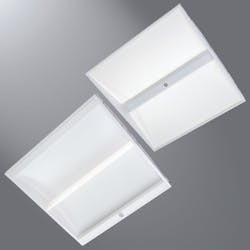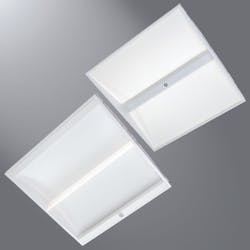Adaptive control technologies including occupancy sensing and daylight harvesting will be enabled in the Cooper Metalux Encounter and SkyRidge SSL families.
Eaton's Cooper Lighting has announced that it will offer an integrated sensing and control system as an option in some of its solid-state lighting (SSL) luminaires that are based on the WaveStream light guide technology. The Metalux Encounter and SkyRidge LED luminaires can now be ordered with the adaptive control option for installation in areas where energy codes require occupancy sensing and daylight harvesting.
"The luminaire-integrated sensor control system reduces the design time and complexity of meeting energy codes for both lighting and controls," said Mark Eubanks, president of Eaton’s Cooper Lighting Division. "The sensor system is designed to guarantee occupancy and daylight harvesting coverage from within the footprint of Metalux ambient luminaires, so the lighting design is the control design. The system achieves the lowest installed cost in small spaces compared to traditional control products."
The Metalux LED luminaires that will carry the controls option are architectural-grade lighting products that use LEDs to edge-light a planar light guide that in turn produces diffuse light from the planar surface. Cooper calls the technology WaveStream and the miniature optical elements embedded in the light guide AccuAim. The optical system is based on technology that Cooper licensed from Rambus. Cooper first demonstrated the Encounter and SkyRidge products at LightFair International in 2013. Commercial deployment came later in 2013.
As with any luminaire, the Metalux products could be utilized with dedicated lighting control systems, but Cooper is pushing the integrated controls option as the simplest way to meet energy codes. Enabling occupancy sensing and daylight harvesting requires nothing more than installing the fixtures and connecting to the standard AC line. In the nearby photo you can clearly see the sensor integrated into the fixtures.
The LED luminaires are shipped preconfigured to automatically switch on and off based on occupancy and to dim or raise light level based on the ambient light in the area. Cooper also offers a remote control that can be used to customize the operation of the control system as dictated by the application.
The integrated controls option is primarily intended for installation in relatively small rooms as Cooper's Eubanks mentioned above. In larger spaces, a more complex control scheme might be warranted. But Cooper suggests that in areas with six or fewer fixtures, the new integrated controls are the most cost-effective option.







